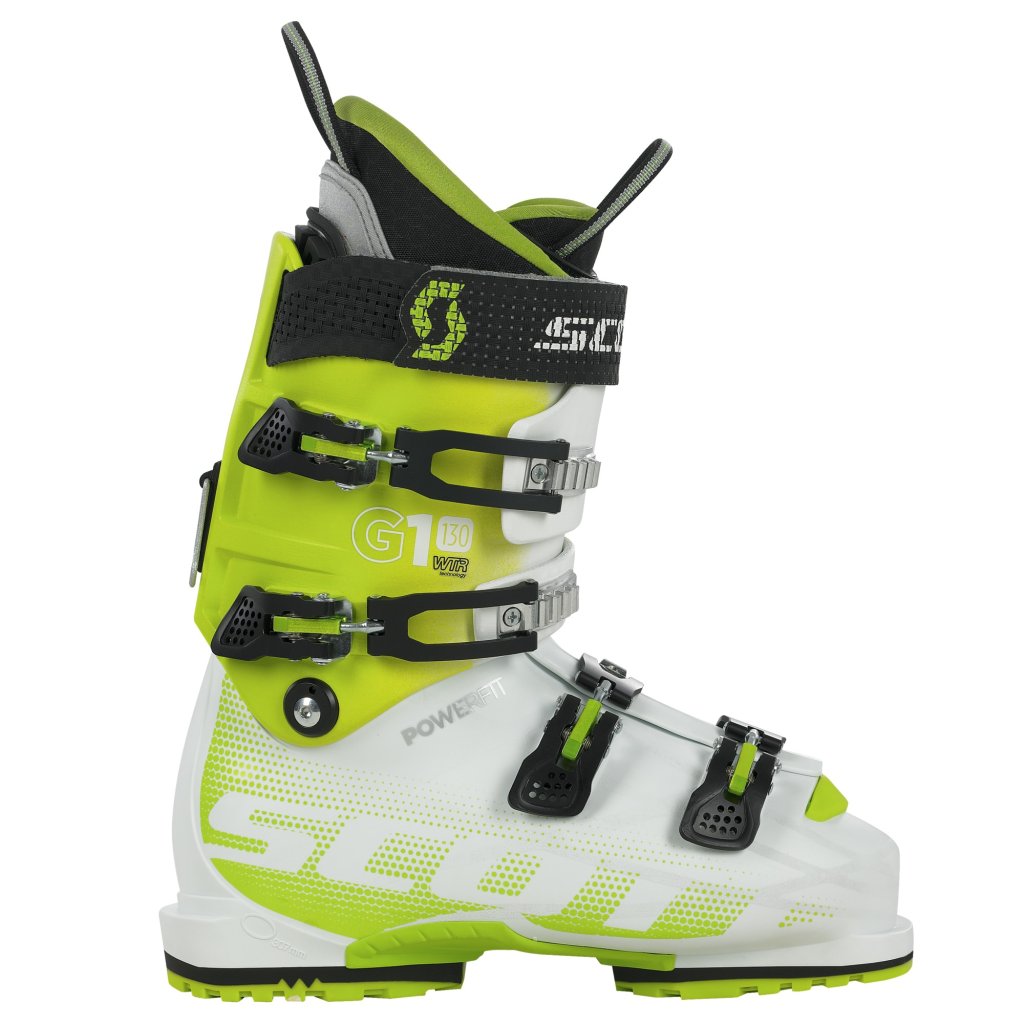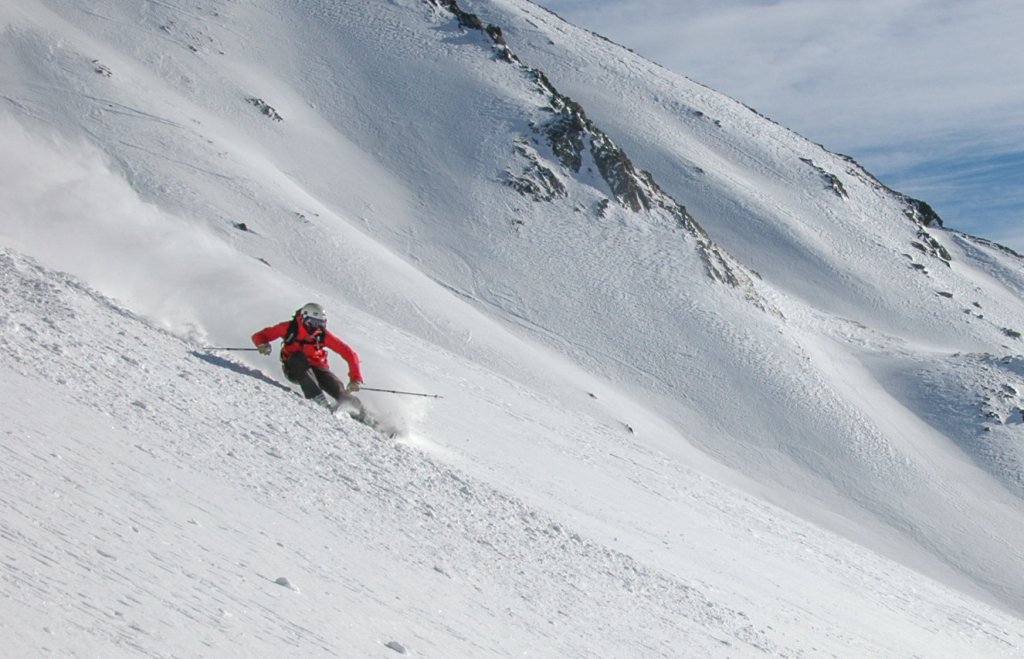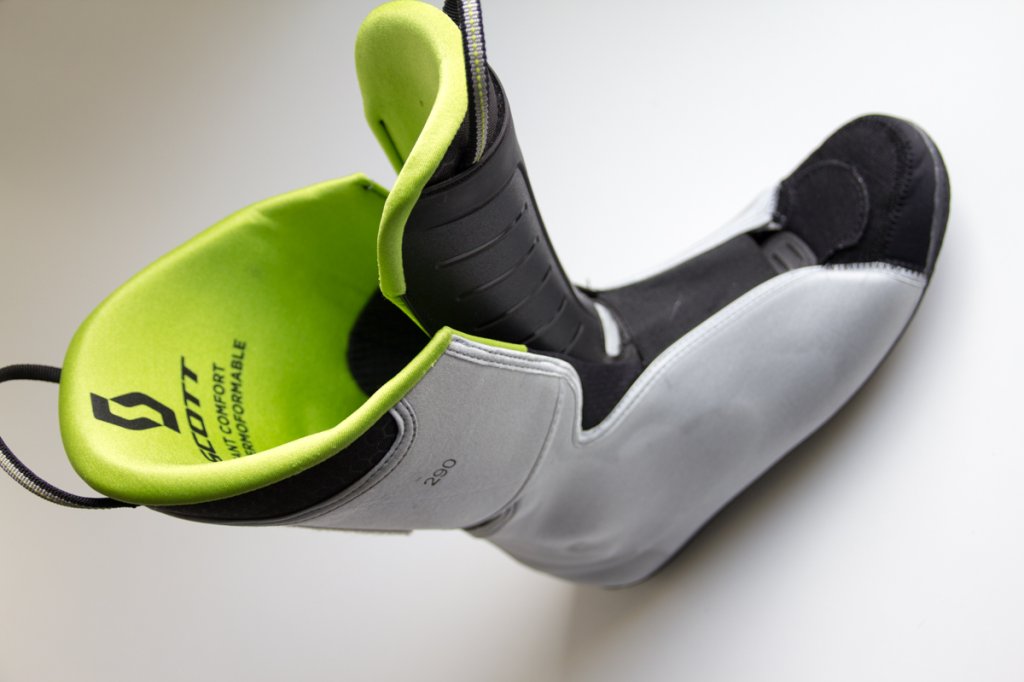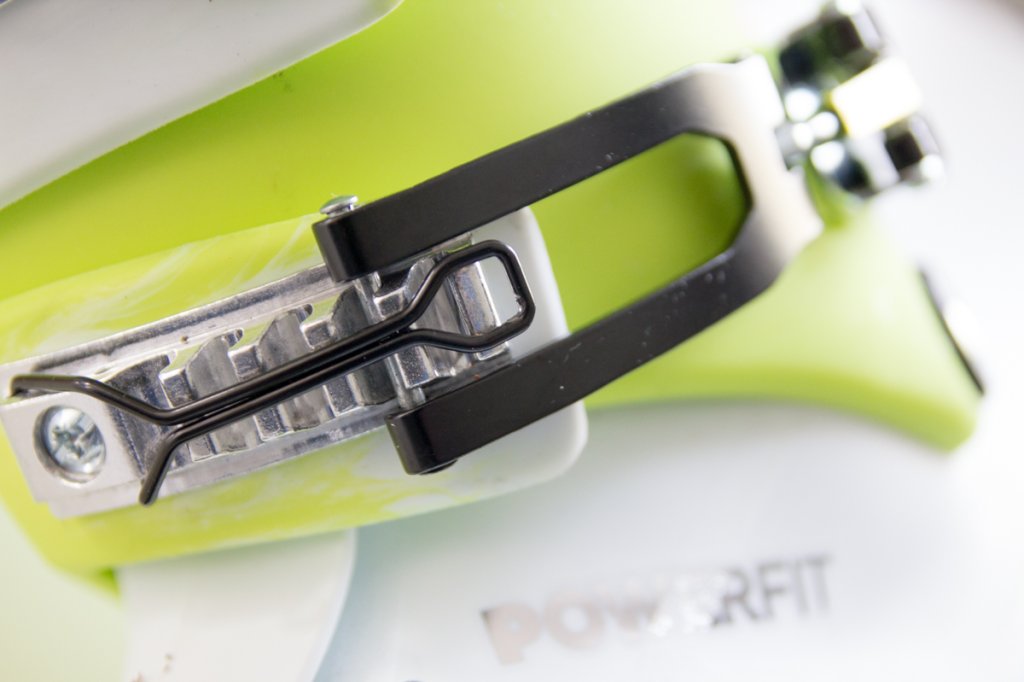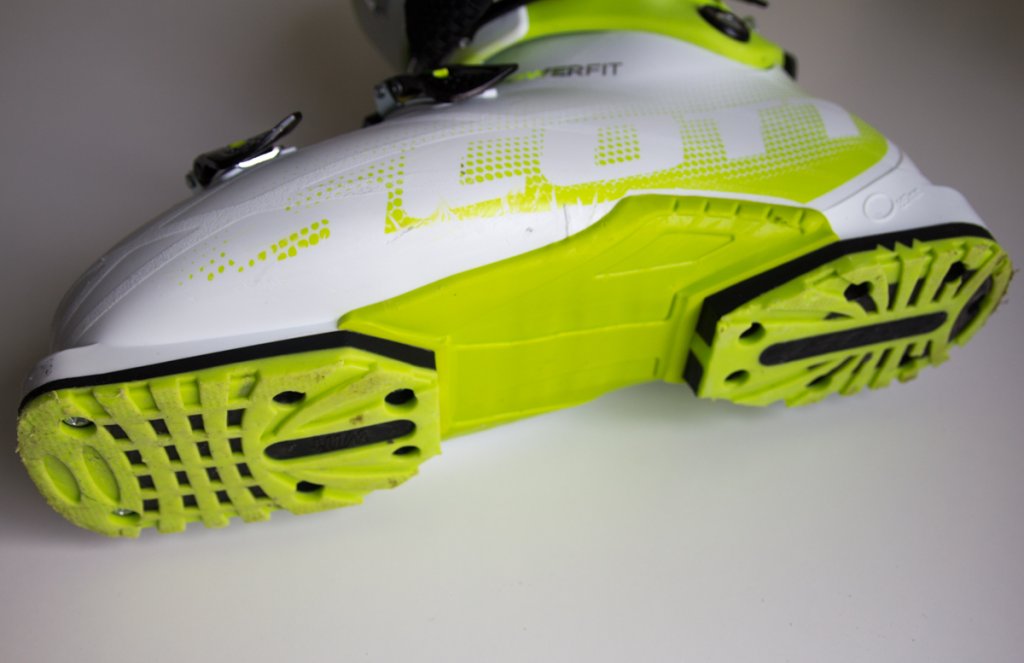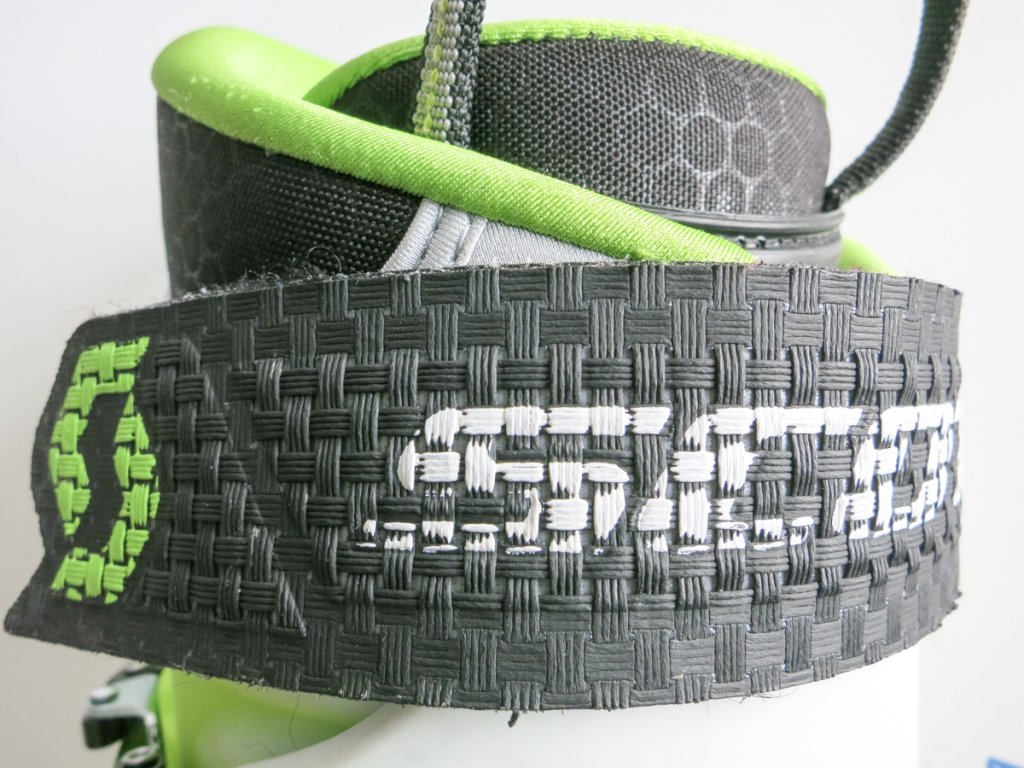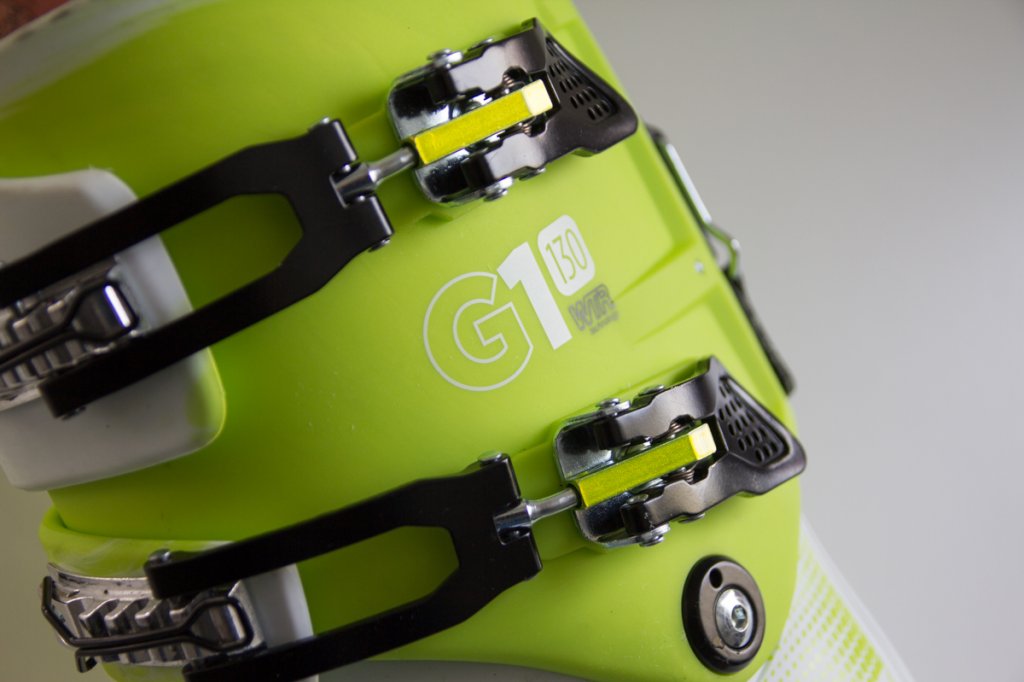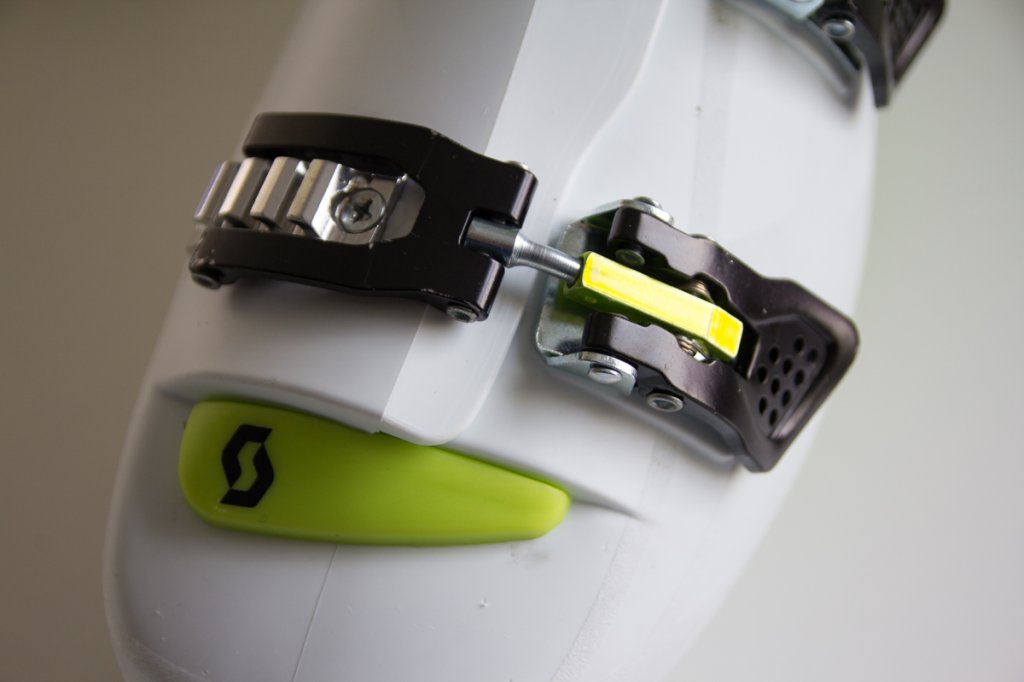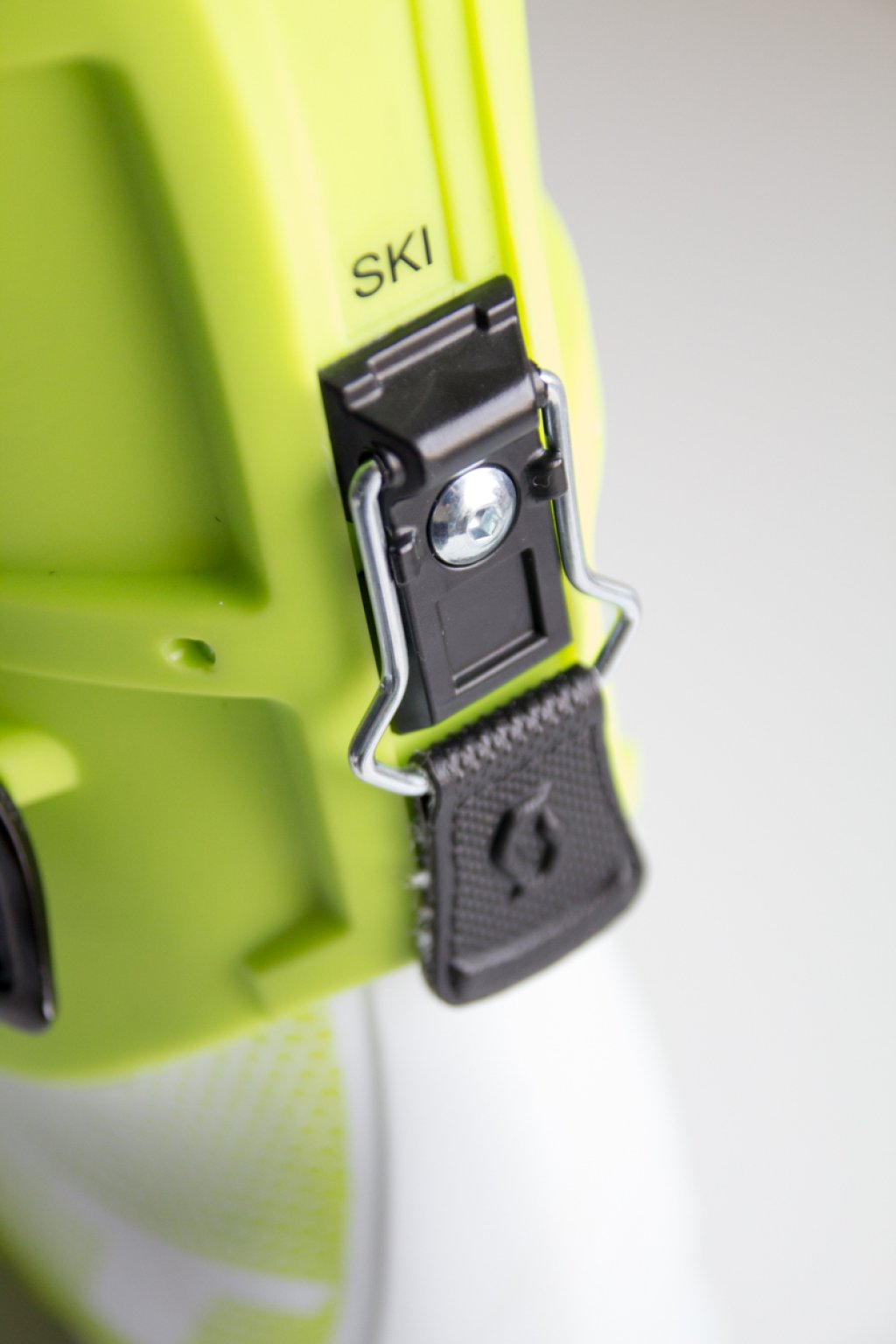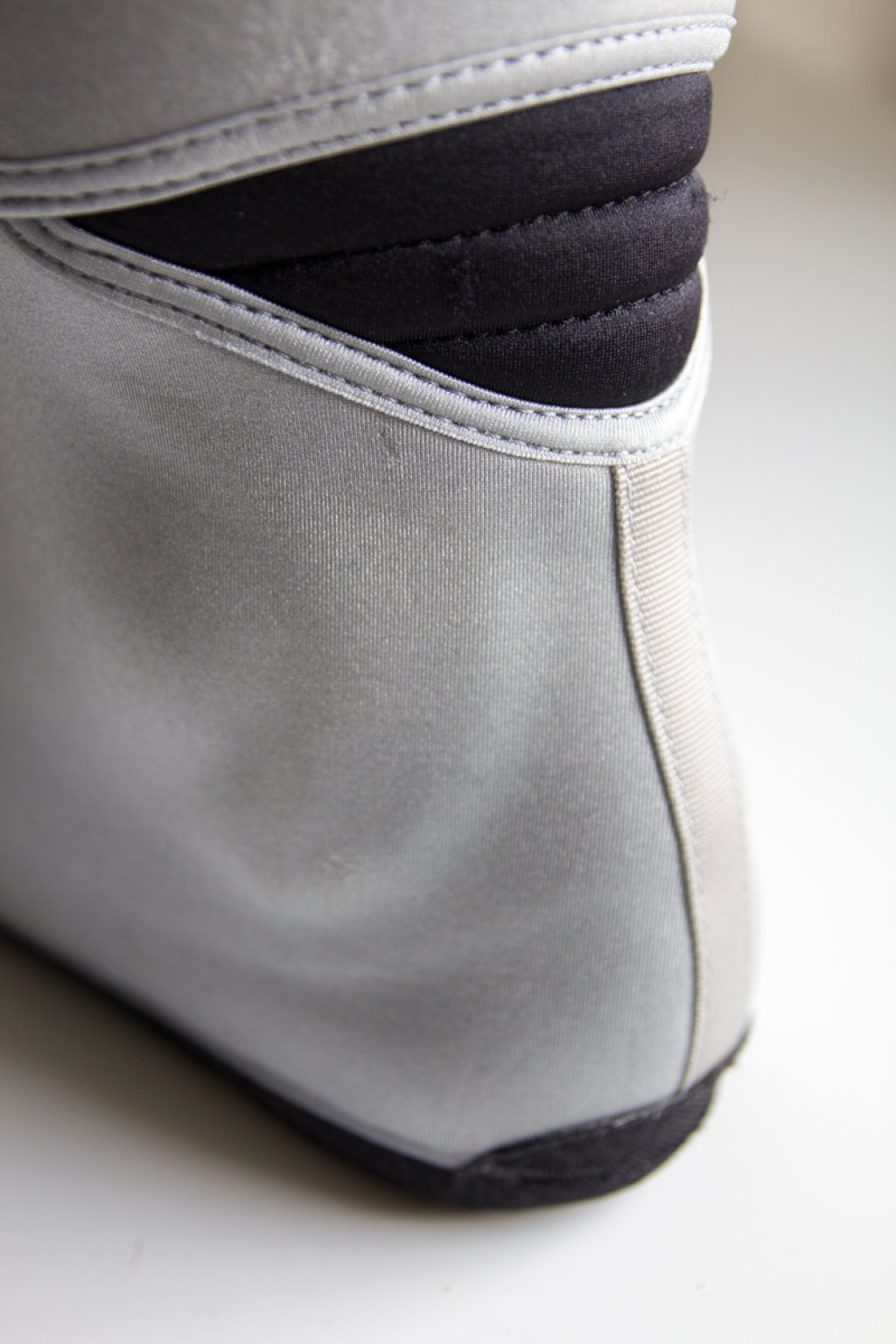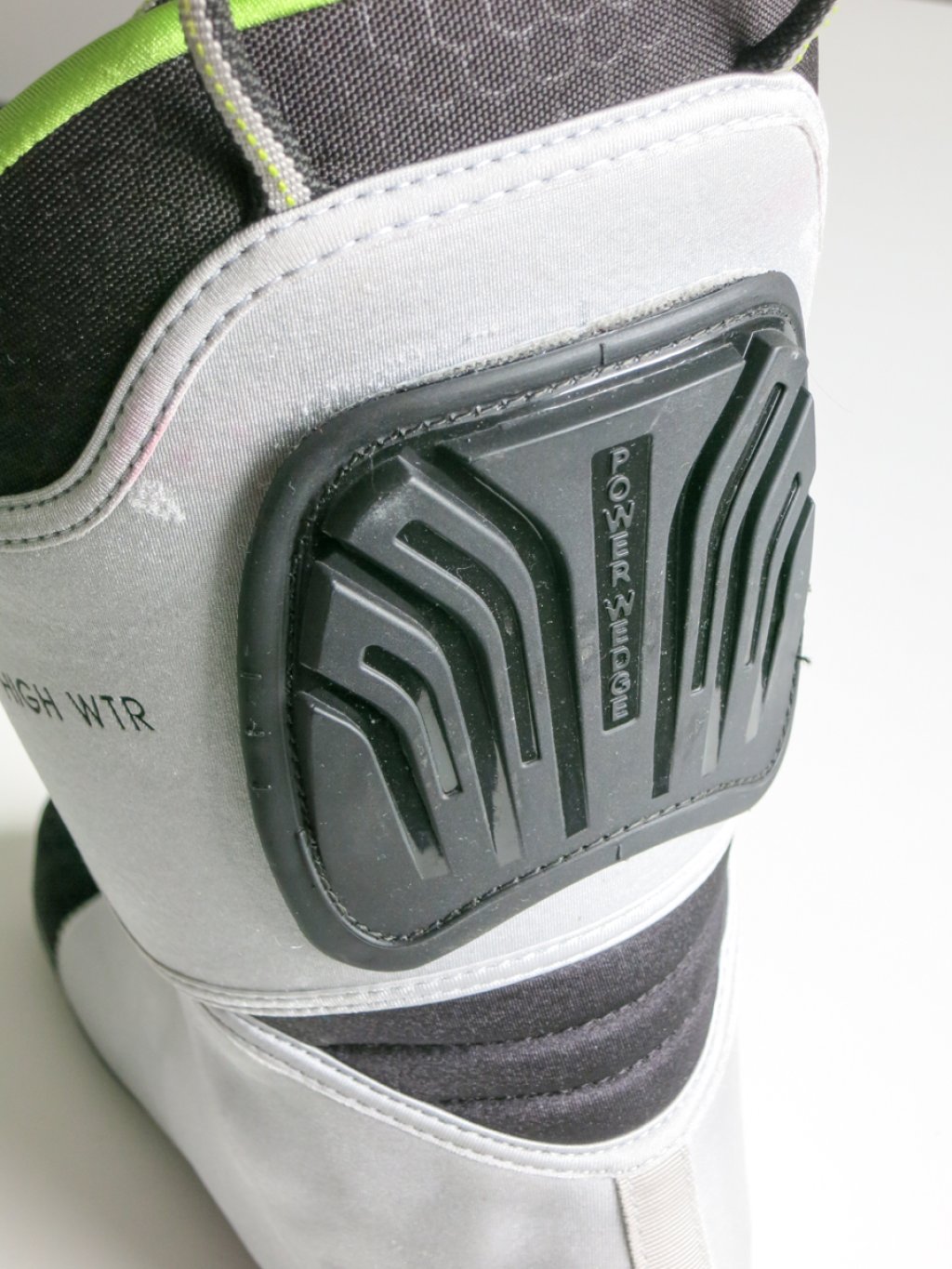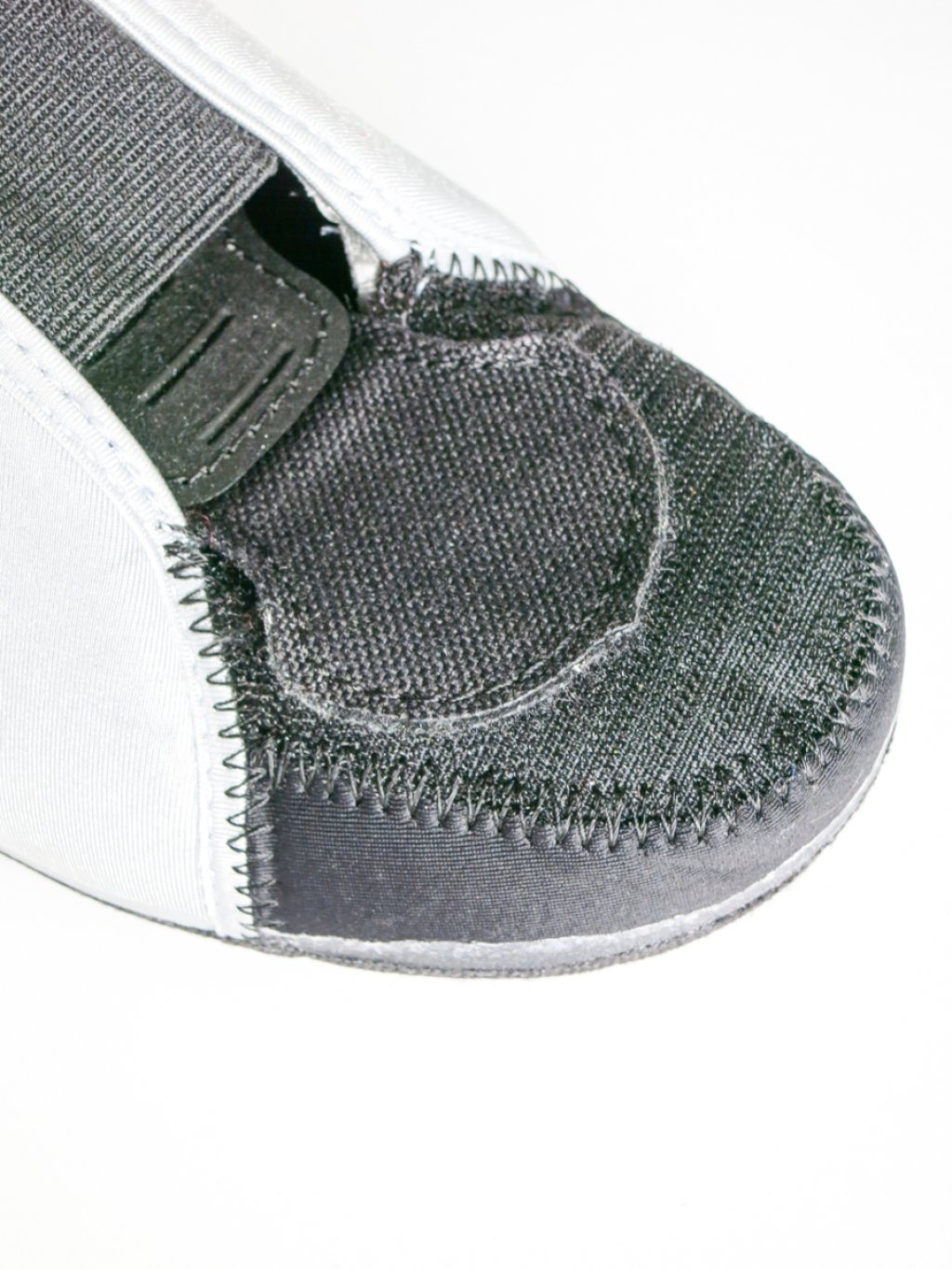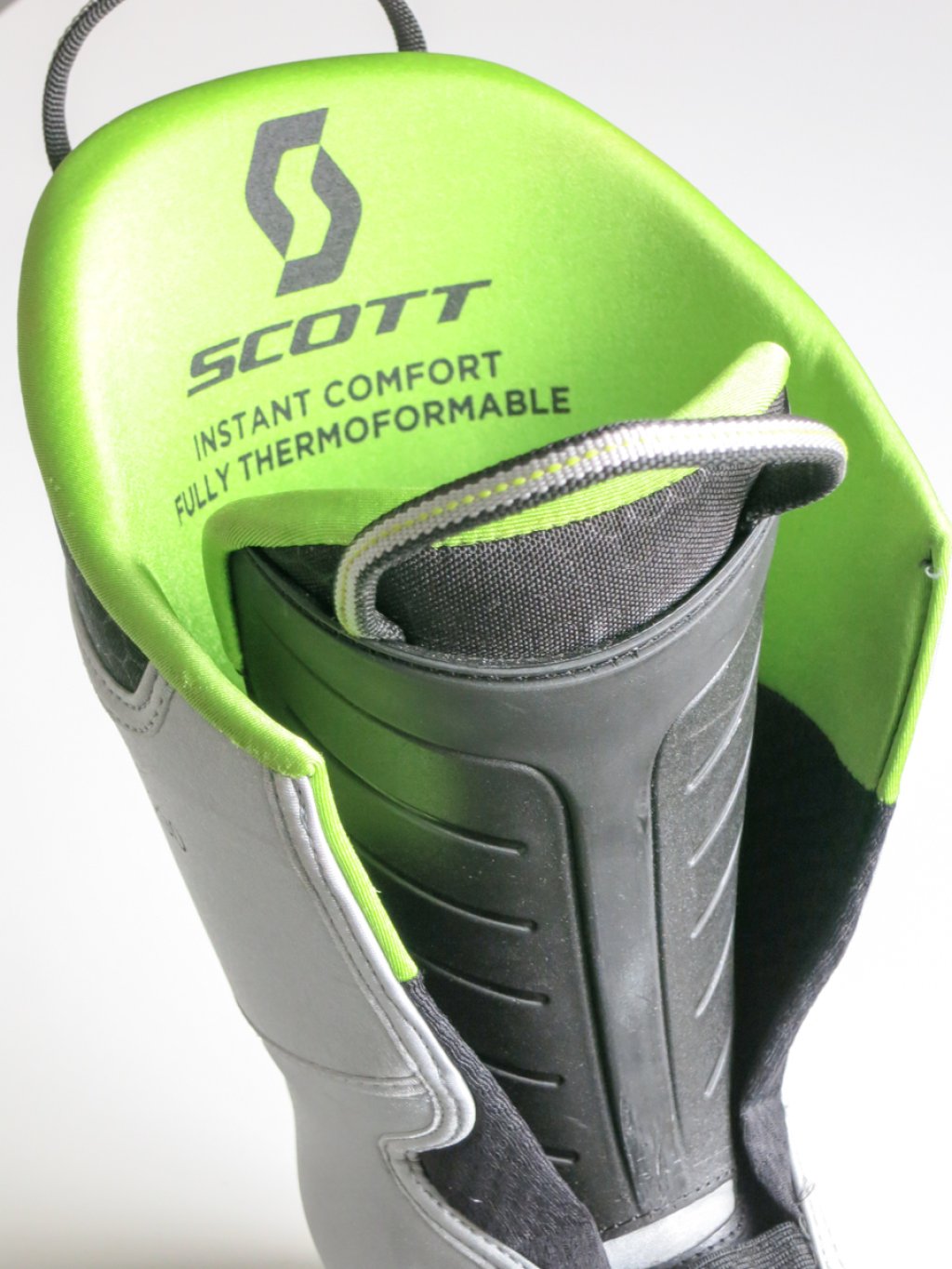The first impression
The good feel of the Scott G1 130 is immediately noticeable: the material and workmanship appear to be of high quality. The Elastollan shell feels a little rougher than the usual smooth plastic shells. The 4 Ergal buckles, which have an additional strap, also catch the eye. This is designed to prevent the buckle from popping out when the buckle is tightened. The question quickly arises as to how often this happens and whether this advantage is worth the disadvantage of opening the shell completely (you then have to lift the bar slightly to pull out the actual bar). In practice, however, it quickly becomes apparent that you quickly get used to the little extra effort involved in opening and that the additional strap is quite helpful when tightening the buckle after riding the lift or after the ascent. You would expect a modern freeride boot to have tech inserts, or at least interchangeable soles with such inserts. However, you will look in vain for these in the G1 130.
The inner boot is reminiscent of a sporty alpine boot. It is relatively thin and made of a harder material. There is no integrated lacing system. The shape is very much based on the anatomy of the foot and the shape of the shell. As a result, the inner boot is not reminiscent of a bulky moon boot, as is the case with some other freeride boots. The feeling when you first try it on is right. The boot fits and provides good support in the heel area. For a flex index of 130, the G1 130 feels a little soft at the front. However, a comparison is always difficult here, as the flex index is not standardized and is interpreted differently by the manufacturers (without any claim to completeness or correctness, this overview from TGR gives an idea of how far apart the flex specifications of the individual manufacturers are).
Shell, interchangeable soles and adjustment options
The shell has 4 buckles. All 4 buckles can be adjusted in length via micro screw threads and closed in 4 (the two lower buckles) or 5 positions (the two upper buckles). The strap is made of thin but very durable plastic. The sole has a profile designed for use on short climbing sections over rocks. The area at the front of the sole has been cut out to allow lateral release in accordance with the DIN ISO standard with appropriate bindings. If the sole is too worn from use on the rock or from walking in the parking lot, it can be replaced with 13(!) screws per shoe. Although the number of screws gives you the good feeling that the sole and shell are firmly connected, it remains to be seen whether all 13 screws can actually be opened when replacing them (you often struggle quite a bit with just 8 screws). The canting setting can be changed with an Allen key. There are 2 positions available. The walking mechanism is activated via a slider with a loop on the back of the shoe. However, with a shaft rotation of 25°, this is quite modest. In comparison, a similar freeride boot, the Black Diamond Factor MX offers 40°, while the Dynafit-TLT6 offers 60°.
The Dynafit-TLT6 is a perfectly suitable touring boot for freeriding.
